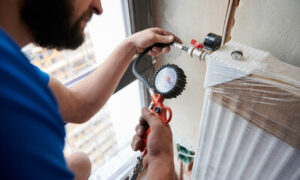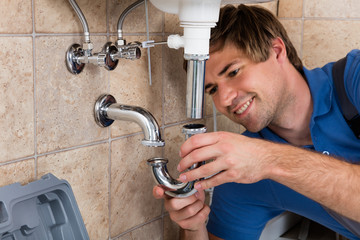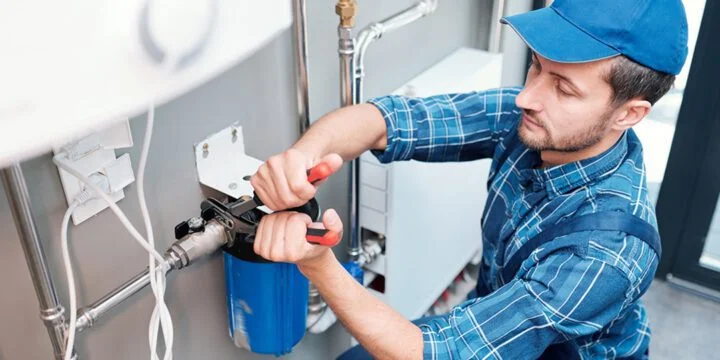Leaking pipes are not only costly to repair but can cause damage to the structure of a building. If left undetected for a long time, leaks can also lead to mildew and mold.

To check for leaks, shutting off the water at the main water valve. Then, take a reading on the water meter. If the numbers have gone up, there is a leak somewhere. For professional help, contact Leak Detection Tampa now!
Drones can perform a variety of tasks for business owners. They are used in roofing, construction, architecture, real estate and many other industries. One of the most popular uses is methane gas detection, and they can be equipped with thermal cameras to help detect leaks. This is especially useful for areas with wood, concrete, spray foam and PVC pipes. In this way, businesses can save money and avoid costly repairs.
A drone is a small, remote-controlled aircraft that can be outfitted with sensors and cameras for use in various applications. It is an alternative to traditional helicopters and planes for inspecting large and hard-to-reach areas. Drones are also much faster and safer than traditional methods. They can also collect data more quickly and provide better resolution images. This allows businesses to identify problems more accurately and reduce downtime.
For example, a drone equipped with a thermal camera can be sent to survey a section of a pipeline. This data can then be uploaded to a central location for analysis and reporting. In this way, companies can monitor the performance of a pipeline and identify potential problem areas before they become critical. This can help save time and resources, and it can also increase safety for employees working in hazardous environments.
Drones can also be used to conduct regular, frequent and comprehensive inspections of water quality. They can be equipped with a range of sensors, including multispectral, chemical and visual, to help monitor the health of vegetation and other water resources. This information empowers water resource managers to make informed decisions that optimize water distribution, identify areas vulnerable to drought and floods and develop conservation strategies.
Moreover, drones can be used to track water levels and monitor river and reservoir health. They can also be used to locate water leaks, resulting in significant cost savings for utilities. In addition, they can also be used to monitor erosion and sedimentation and assess the health of ecosystems. In fact, one company claims that its drones can outperform foot searches by up to five times, and they can be used in difficult or risky environments without compromising safety for staff.
LiDAR
LiDAR sensors fire a series of laser beams across a scene at extremely high rates. The distribution of energy that returns to the sensor is recorded as a waveform, with areas that appear brighter than others corresponding to objects on the ground (like branches or a building). This data can then be used to build a 3D model of the surface environment, known as a point cloud.
While traditional surveying methods for forests are time-consuming and often require the use of chainsaws, LiDAR is able to quickly and accurately map miles of forest like never before. This information can be incredibly useful to conservation efforts, as well as to the many industries that depend on the world’s trees for their products—from paper and syrup to furniture.
Specialized LiDAR systems mounted on drones or unmanned aerial vehicles can scan oil and gas facilities for methane leaks. These systems utilize Differential Absorption LiDAR to detect methane emissions by analyzing the absorption of laser light in the presence of methane. By identifying the locations of methane leaks, these systems can help operators improve operations and reduce environmental impact.
Mobile LiDAR scanning enables engineers to rapidly and efficiently acquire data on oil and gas facility infrastructure from the safety of their vehicle, reducing the need for expensive and hazardous field crews. This data is then used to create 3D models of storage tanks, pipelines, and processing plants to help engineers optimize facility design and maintenance. Regular mobile scans can also help engineers monitor changes in these facilities over time, detecting potential issues and assessing safety hazards.
The attributes of each lidar point vary depending on how the data was collected and processed. However, most points include x, y, and z positional values as well as light intensity. Light intensity values are especially helpful for highlighting surfaces such as impervious ground, low vegetation, buildings, and water.
Other attributes may be included in a point cloud, such as RGB (red, green, and blue) values, GPS time, scan angle, and scan direction. In addition, many vendors classify each point according to the type of surface that it reflected from—for example, low or high vegetation, building, or water.
Ultrasonic
A technique that uses ultrasonic waves to examine the integrity of mechanical structures without dismantling them. Changes in the material, such as holes, cracks and corrosion, cause differences in the impedance of sound waves that propagate through them, and these signals are detected by the sensors. This allows nondestructive testing to gather data on a number of structural aspects such as welded joints, petrochemical storage tanks and the quality of concrete poured at construction sites.
Ultrasonic NDT also works well for detecting compressed air and vacuum leaks in noisy industrial environments. Pressurized air leaks produce a high-frequency hiss that’s audible with a handheld ultrasound detector. This device allows operators to locate hissing sources and prioritize air leak repairs, even in the midst of production operations. The device is battery-powered and can be paired with headphones for use in noisy settings.
The use of ultrasound for cleaning and other applications has grown in recent years because it can remove contamination faster than traditional methods. Ultrasonic cleaning is used in the aerospace, automotive, sporting goods, printing, medical and pharmaceutical industries. It’s also a popular method for removing solder flux residue from circuit boards and other electronic devices. Ultrasonic waves generate cavitation that breaks the surface tension of liquids, resulting in increased molecular activity. This can accelerate certain chemical reactions, such as oxidation, reduction, dehydration and polymerization.
Another advantage of ultrasonic NDT is that it can detect corrosion in welded joints, a common source of leaks in pipe systems. This can help identify flaws before they become a safety risk and reduce the need for costly repairs. However, standard conventional ultrasonic NDT systems have several drawbacks such as limited testing distance and inflexible scanning mechanisms. Consequently, it’s often best to start with low-resolution ultrasonic NDT (LRUT) and then follow up with phased array ultrasound testing.
The PS-i handheld Ultrasonic Leak Detector is an excellent example of a portable ultrasonic leak detection system that’s ideal for industrial uses. It can easily find compressed air and vacuum leaks in noisy environments, and the user-friendly interface makes it easy to optimize sensitivity and detect small leaks.
Visual Inspection
Visual inspection is a simple and cost-effective technique for spotting leaks. It is often included in maintenance checklists and can be done using a variety of tools. Whether it is a simple pen and paper or more advanced software, visual inspection can help spot potential problems and make them easier to address before they lead to costly issues such as property damage and safety hazards.
Typically, visual inspections are non-destructive tests that look at the surface of an object to identify defects or flaws. They are commonly conducted in manufacturing, healthcare and energy industries. However, they can also be used to inspect infrastructure such as roads and bridges.
When it comes to leak detection, visual inspection can be used in conjunction with other methods such as thermal imaging or ultrasound. This allows technicians to perform a more comprehensive test and get a complete picture of an asset’s condition.
Homeowners can detect water leaks by observing damp spots, water stains or unexplained increases in water bills. Other methods of spotting a leak include monitoring water meter readings and using specialized acoustic devices to pinpoint the source.
In manufacturing, visual inspections can be used to identify assembly and cosmetic defects on the factory floor. This ensures that products and materials meet specific standards and requirements in quality control. Similarly, in the healthcare industry, visual inspections are vital for patient health and safety and ensure that equipment is working properly before patients undergo surgery.
In addition to reducing costs, visual inspections can also improve efficiency and reduce downtime. By allowing technicians to conduct inspections without the need to shut down machines, visual inspection can save valuable time and resources. However, it is important to remember that the scope of a visual inspection is limited and may miss some issues. Consequently, it is necessary to regularly review and update your inspection strategy to keep it up-to-date and effective. Moreover, it is essential to implement a procedure for reporting and recording any errors or downtime that are identified during an inspection. This will allow you to address these issues quickly and effectively, minimizing the impact on your organization’s bottom line.






